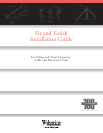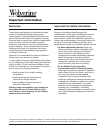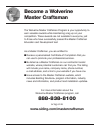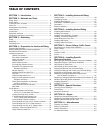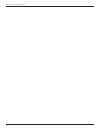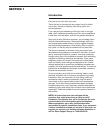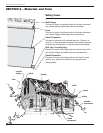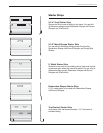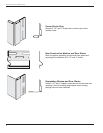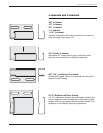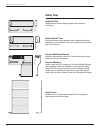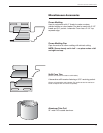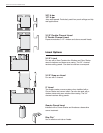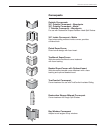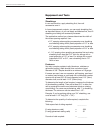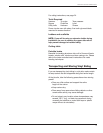
1
Important Information
Warranties
These instructions describe and illustrate the steps
involved in installing Wolverine siding and trim.
Their purpose is to provide detailed information and
how-to tips that will simplify the installation process.
Wolverine shall not accept any liability or responsibility
under its written warranty for failure caused by
application that does not meet the requirements for
proper installation. These requirements are outlined
throughout this book. Any deviations from these
requirements should be addressed and approved
in writing by Wolverine.
Wolverine is not responsible for moisture protection.
Please check your warranty for details.
In rare incidents, intense sunlight reflected from glass
on vinyl siding may create heat buildup and cause the
siding to distort. To help minimize the effects of heat
buildup from reflected sun, the homeowner may take
one or more of the following measures:
• Install a screen in the window causing
the problem
• Install an awning over the window to
break the line of light reflection
• Use shrubbery to protect the area of
siding from reflections
Building codes and regulations vary throughout
the country. Be sure to check with your local
code official or governing body for the building
requirements in your area.
Important Fire Safety Information:
Exterior vinyl building materials require little
maintenance for many years. Nevertheless, common
sense dictates that builders and suppliers of vinyl
products store, handle and install vinyl materials in a
manner that avoids damage to the product and/or the
structure. Owners and installers should take a few
simple steps to protect vinyl building materials from fire:
• To Home and Building Owners: Rigid vinyl
siding is made from organic materials and will
melt or burn when exposed to a significant
source of flame or heat. Building owners,
occupants and outside maintenance personnel
should always take normal precautions to
keep sources of fire, such as barbecues, and
combustible materials, such as dry leaves,
mulch and trash, away from vinyl siding.
• To the Building Trades, Specifiers,
Professionals and Do-It Yourself Installers:
When rigid vinyl siding is exposed to significant
heat or flame, the vinyl will soften, sag, melt or
burn, and may thereby expose material
underneath. Care must be exercised when
selecting underlayment materials because many
underlayment materials are made from organic
materials that are combustible. You should
ascertain the fire properties of underlayment
materials prior to installation. All building
materials should be installed in accordance with
local, state and federal building codes and fire
regulations.
This manual shows the basic guidelines for installation. It is based on ASTM (American Society for Testing and Materials) D4756, the standard
practice for installation of vinyl siding and soffit. Additionally, we recommend that local building codes be reviewed.



